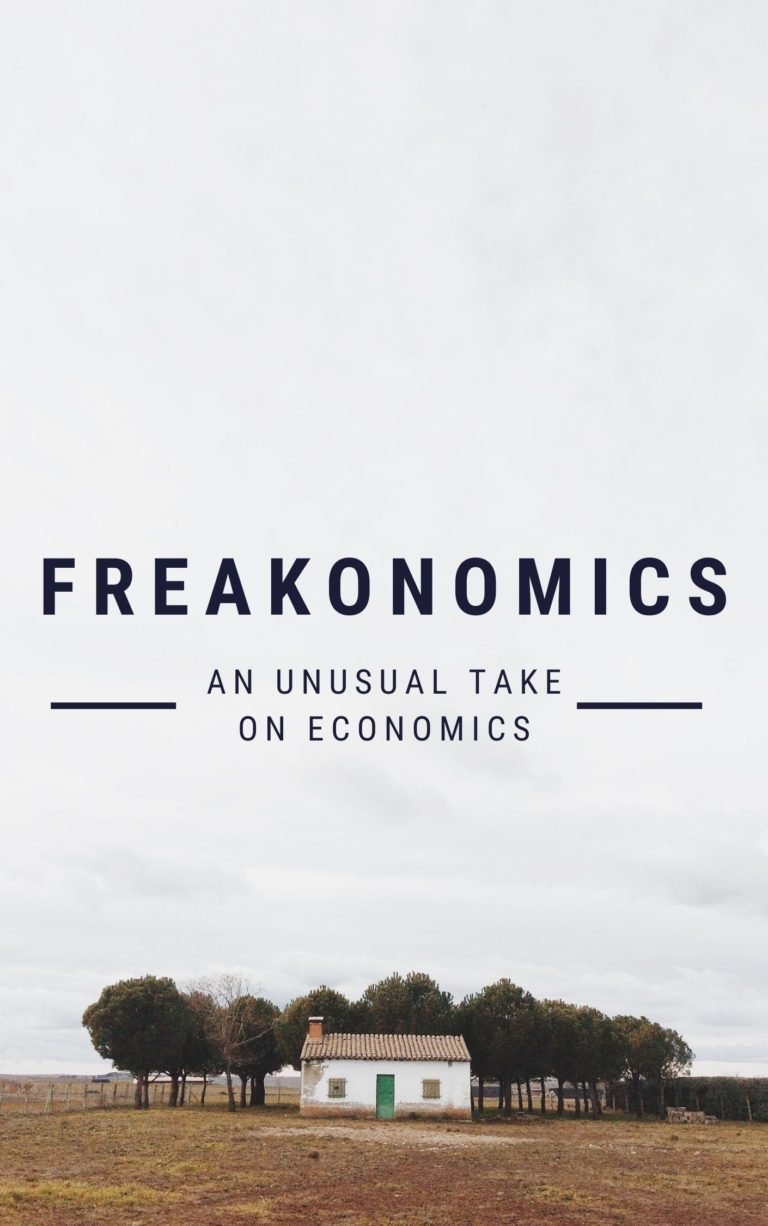Digital Gold
Bitcoin and the Inside Story of the Misfits and Millionaires Trying to Reinvent Money
Nathaniel Popper
Rating: 8.4
“Bitcoin may be a product of computer science, but it is a very human story. This highly entertaining history reminds us yet again that truth can be stranger than fiction and can be peopled with even more unusual and compelling characters.”
-Larry Summers, former Secretary of the Treasury
Contents
Bitcoin’s Origins and Principles
Online chat rooms began mentioning Bitcoin in 2008. Some people who were active in chat rooms, including computer programmer Hal Finney, received emails from someone calling himself Satoshi Nakamoto. He described Bitcoin as “e-cash” – a completely electronic currency that didn’t need backing from a bank, government or other organization. Instead, it would live in users’ “collective computing memory.”
“Money is to any market economy what water, fire or blood is to the human ecosystem.”
The person using the name Nakamoto claimed that people could use Bitcoin without leaving any “identifying information” that governments could track. In January 2009, Finney downloaded a program that created or captured virtual currency increments – Bitcoins. When computers on the network solved a “computational puzzle,” they won 50 Bitcoins.
“A virtual currency that rose above national borders fitted right in with an industry that saw itself as destined to change the face of everyday life.”
Finney was part of online communities that discussed ways to reshape society and help people maintain privacy in a technological age. Mathematicians at MIT and Stanford made it possible for ordinary people to encrypt messages, something only large institutions could previously do. This “public-key cryptography” used public and private keys to safeguard privacy. Bitcoin applies this technology to money.
“But while the Bitcoin software itself was working well, new users quickly ran up against the limitations of the Bitcoin ecosystem.”
Before the individual calling himself Nakamoto introduced Bitcoin in 2008, several people had independently developed various flawed e-currencies. Bitcoin was a breakthrough. It was “fully peer-to-peer,” removing the need for central institutions. Computers on the Bitcoin system tracked transactions. The “Bitcoin process” had five stages. Utilizing a private key, a user initiated a Bitcoin transfer. The other users confirmed that the sending address had sufficient money and added the transfer to the list of transactions, or a “block.” Computers raced to get their blocks added to the chain. Any computer adding a block to the “blockchain” got a unit of Bitcoins. To win the next bundle, the networked computers worked on generating a new tally of unconfirmed Bitcoin transactions.
Bitcoin Develops: 2010
Nakamoto’s arguments promoting Bitcoin shifted to issues such as how central banks threaten the economy by debasing currency. Until the 2008 fiscal crisis, few people worried about this. After it, the fact that the originators would create only a set number of Bitcoins became a selling point.
“The conference was a rather apt representation of Bitcoin itself, with its odd mixture of chaos, community, snake oil, innovation, high-mindedness and enthusiasm.”
Software developer Jed McCaleb created Mt. Gox, a “Bitcoin exchange.” Even as the number of users grew, Bitcoin remained a community. A user found a code flaw that let him spend someone else’s Bitcoins. He told Nakamoto, who fixed it. When WikiLeaks released classified documents exposing secret operations, PayPal came under pressure to stop donating to WikiLeaks. Some suggested that WikiLeaks should use Bitcoin. Nakamoto argued that Bitcoin wasn’t ready for the scrutiny this would bring. The community agreed, but Nakamoto gradually withdrew from active involvement.
Bitcoin and Silk Road: 2011
Mt. Gox had fewer than 3,000 customers, but its demands became too stressful for McCaleb, who sold Mt. Gox to programming language developer Mark Karpeles. At this point, Bitcoins had little effect on the world. This changed with the involvement of entrepreneur Ross Ulbricht. A libertarian, Ulbricht had founded Silk Road, an online marketplace for items consumers couldn’t buy in stores, such as illegal drugs. Since no authorities could track Bitcoin, it was a perfect tool. By March 2011, Silk Road had more than 150 members. Its growth drew attention to Bitcoin.
“At the same time that Bitcoin’s reputation was getting a makeover in Silicon Valley, the physical infrastructure of the Bitcoin network was also undergoing an extensive transformation.”
Tokyo entrepreneur Roger Ver poured money into acquiring Bitcoins and drove prices to $3.30 apiece. He put up a billboard proclaiming that his business accepted Bitcoin. Coverage in Time and Forbes on Bitcoin’s possibilities sent prices to $10. Nakamoto stopped communicating with the Bitcoin community. Hackers launched “a denial-of-service attack” on Mt. Gox, demanding $5,000 in ransom. In May 2011, Silk Road shut down so it could post a new version of its site online. Bitcoin prices dropped, demonstrating the close links between the two.
“Thanks to Silk Road, Bitcoin was being regularly used for the first time as a medium of exchange for real, if illegal, things.”
When Gawker did a story on Silk Road, Bitcoin prices rose to $15. Then US Senator Chuck Schumer denounced Bitcoin as electronic “money laundering.” His criticism sent prices to $30. In June 2011, hackers hit Mt. Gox. Bitcoin dropped from $17 to one cent. Other crises followed. Bitomat, a Polish exchange, deleted files containing private keys to 17,000 Bitcoins. This cyberattack showed one of Bitcoin’s strengths – that only users had control over their own coins – but that strength carried a weakness of vulnerability to such cybercrime onslaughts.
“The extent to which Bitcoin could survive and grow without government approval was on display.”
Bitcoin enthusiast Bruce Wagner created the web-based The Bitcoin Show and organized the first in-person forum for fans. Close to 100 people attended to hear three formal talks and participate in a lot of informal networking. Some early Occupy Wall Street protesters thought Bitcoin might serve as an alternative to centralizing financial power in banks. Silk Road brought in $30,000 in commissions in August 2011 alone. The US Homeland Security department began investigating Silk Road. The first arrest led them to Bitcoin. The same year, Ver invested in Charlie Shrem’s company BitInstant. Shrem wasn’t an idealist: he came to Bitcoin looking to make money.
Bitcoin’s New Investors: 2012
In January 2012, Bitcoin received more attention when the TV series The Good Wife built an episode around it. When Shrem realized he could use Bitcoin to transfer funds faster and cheaper than he could through banks, other investors noticed as well. Realizing that Silk Road’s illegal activities tainted Bitcoin’s reputation, supporters created The Bitcoin Foundation to address its legal concerns. The foundation’s leaders saw that the people running Mt. Gox were a problem. BitInstant garnered investments from businessman David Azar and tech millionaires Cameron and Tyler Winklevoss. Late in 2012, investor Wences Casares got involved. As an Argentine, he had experienced the societal impact of inflation and currency manipulation. Seeing Bitcoin’s potential advantages, he drew financial sector investors.
Bitcoin Makes Change: 2013
Investor battles over the management of BitInstant eventually led to a split. Specialized chips let people mine Bitcoins faster, starting an “arms race” in creating Bitcoins. In March 2013, the Bitcoin community hit a crisis: Two groups of computers disagreed about who had won a Bitcoin block. Democratic discussion led to everyone agreeing to use the same version of the software and to accept some financial loss to keep the community intact.
“Bitcoin was on a trajectory that was going to be hard to sustain as the authorities became more aware of it.”
That month, users opened 60,000 Mt. Gox accounts. The staff wasn’t ready and the business struggled. Shrem’s managerial weaknesses led to trouble for BitInstant. Some buyers shifted to other venues, like Coinbase. Silicon Valley Bank didn’t trust Coinbase not to launder money, and Coinbase had trouble with the bank’s transactions limits. Thus, the Bitcoin community advocated owning a US-based, federally chartered bank. Speculation drove up the number of Bitcoin trades and prices: On April 9, 2013, one Bitcoin cost $260.
“The unmistakable irony of these wild days was that a technology that had been designed, in no small part, to circumvent government power was now becoming largely driven by and dependent on the attitudes of government officials.”
The Bitcoin Foundation held its first conference in May. The government closed another electronic currency, Liberty Reserve, after criminals use it to move money. The negative attention led banks to delay investing in Bitcoin. Economists noted that the 21-million limit on mining Bitcoins would make them more valuable over time.
“At the Senate hearings, the Bitcoin panelists all emphasized that the virtual currency was actually a terrible way to break the law.”
BitInstant relaunched to address its software issues, but operators took it down on July 12 for a short break. A hacker then shut Silk Road down for days, until owner Ulbricht paid hundreds of thousands of dollars in ransom. When a Silk Road user threatened to expose data about the site’s users, Ulbricht tried to hire an assassin.
DC Conference
In the summer of 2013, Bitcoin general counsel Patrick Murck attended a conference in Washington, marking the first time a Bitcoin representative shared the “stage with lawmakers.” Though someone from Department of Justice compared the Bitcoin community to “child pornographers,” Murck had a positive exchange with the branch of the Treasury responsible for rules governing virtual currencies. Bitcoin’s pioneers envisioned individuals controlling their own money with no centralized authorities, but people chose “centralized services like Coinbase” for the sake of convenience. Ver founded Blockchain.info as an alternative. It was an electronic wallet that held people’s “private keys” in safety in case hackers attacked their computers.
“Bitcoin had the good fortune of hitting hard times at a moment when there was a renewed willingness to rethink the foundations of the existing financial system.”
In late September 2013, federal agents arrested Ulbricht, charging him with several counts of conspiracy – regarding narcotics, money laundering, and the like – and with soliciting murder. The government seized Silk Road. The Bitcoin community panicked. People hurried to sell Bitcoins, and the price dropped. Some saw this as an opportunity to clean up Bitcoin’s reputation.
China and Argentina
Chinese entrepreneurs started getting involved with Bitcoin in 2011; by 2013, they were mining and exchanging Bitcoins. Baidu, the Chinese search engine, announced that it would take payments in Bitcoins. Chinese speculation and investment soared.
“The people who wanted Bitcoin to do the least for them were the ones who were managing to do the most for Bitcoin.”
In November, Murck spoke to the Senate about Bitcoin. The overall response was positive. A Senate Banking Committee hearing “on virtual currencies” marked a turning point. Even Senator Schumer spoke favorably. A Wall Street report lauded Bitcoin as a “payment system” with largely untapped potentials. While the American government adopted a positive attitude toward Bitcoin, China decided to treat “Bitcoin as a digital commodity” instead of a currency. Bitcoin thrived in Argentina. Its virtual currency BitPagos appealed to users as an alternative to expensive credit cards. Casares, who launched Bitcoin in Argentina, sold his business to start Xapo, which provided superior storage of Bitcoins.
“The Bitcoin arms race was on.”
When Bitcoin prices spiked, new people examined the currency. The latest spike drew the attention of high-profile economists such as Paul Krugman and Tyler Cowen. Science fiction writer Charles Stross criticized the “vast inequality in the holdings of Bitcoins.” These criticisms did not dampen investor interest or US governmental support. Wells Fargo expressed interest in collaborating “on a Bitcoin exchange.”
Bitcoin Controversies: 2014
At the end of 2013 and the start of 2014, papers from the Federal Reserve Board discussed using “blockchain technology” to make financial transactions safer. Shrem was trying to revive BitInstant. When he returned to the US after speaking in Amsterdam, federal agents took him into custody for activities related to Silk Road. Shrem’s arrest and governmental pressure to track money movement more closely chilled bank interest in Bitcoin.
In January 2014, Mt. Gox customers complained they’d asked for their Bitcoins, but hadn’t gotten them. Mark Karpeles said he was working on the problem. On February 7, he closed withdrawals. Hackers had used a “transaction malleability” software flaw that let users ask for their coins, change the code and ask for them again. Mt. Gox revealed the theft of “all the company’s customer holdings” – worth hundreds of millions of dollars. Mt. Gox sought outside help to avoid bankruptcy. Prices dropped on other exchanges, and thousands lost their investments.
On March 6, Newsweek claimed it had identified Bitcoin’s creator – Dorian Nakamoto, a Japanese immigrant to the US. A private man who lived with his mother, Nakamoto had a physics degree and had worked on “classified engineering projects.” When the press descended on his house, Nakamoto denied having anything to do with Bitcoin.
At a Goldman Sachs conference on virtual currency, a Goldman executive indicated that adapting blockchains to speed up financial transactions intrigued the firm. People within major banks supported Bitcoin or a similarly decentralized system. Banking technology experts appreciated how blockchains could speed up transfer of large payments without sacrificing security. The Bitcoin community came to enjoy new technological support, like new chips for mining Bitcoins, but faces greater public scrutiny.







One Comment